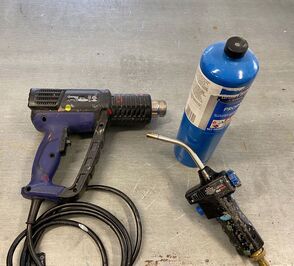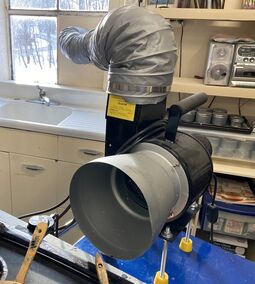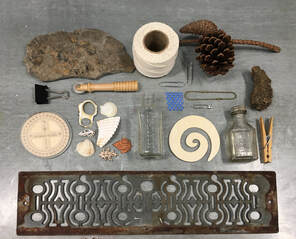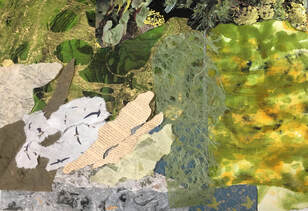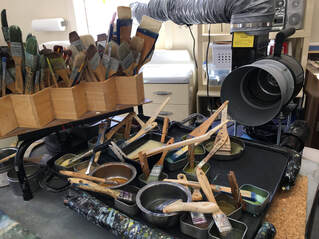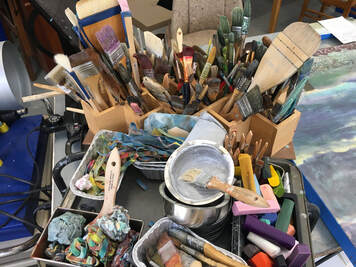Get ready to paint...
You've got your encaustic medium and a variety of colors. Now get your tools together and set up your space.
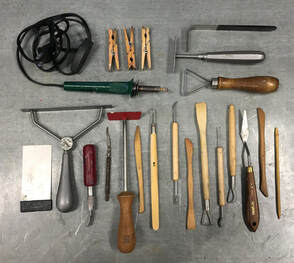
TOOLS: A variety of simple tools are used in the process.
- A heating surface to melt the paints. A fancy encaustic palette works well of course, but household electric griddles work well too. I found my favorite one in a yard sale.
- Brushes must be natural bristle or hair - synthetics will melt in the hot medium. I use a variety, depending on how I will be painting. Cheap 'chip' brushes from the hardware store are fun to work with as they are cheap, you can cut and trim them to suit, and the low bristle density is a good carrier for the thicker melted wax paint. Natural hair burshes are good for laying in a smooth surface. Bristles help create texture. Experiment!
- Scraping and carving tools are a necessity! Try clay carving tools, woodburning tools, wood carving knives and tools, old dental instruments, along with special encaustic scraping tools.
Encaustic painting involves multiple repeated steps, and the many layers provide many chances to tweak your individual creative process.
On to Painting with Encaustic
On to Painting with Encaustic

